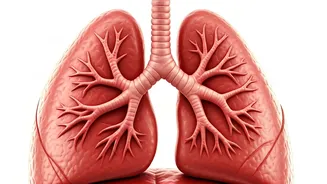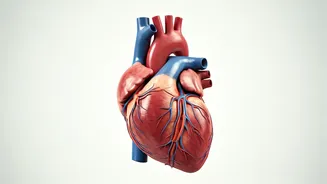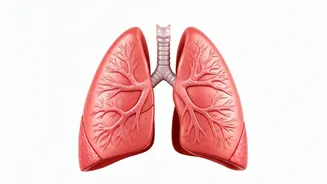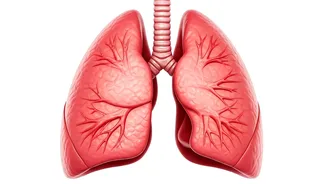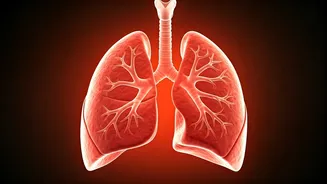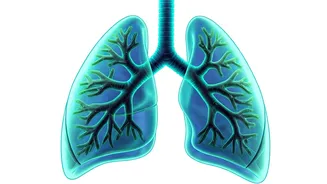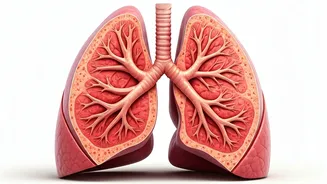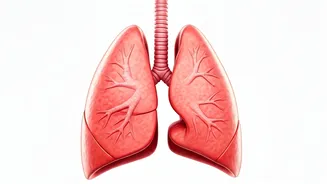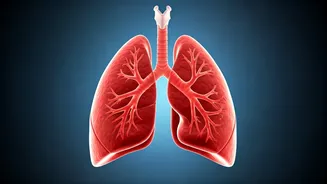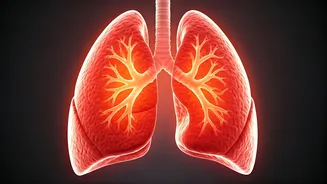Diaphragmatic Breathing
Diaphragmatic breathing, also known as belly breathing, is a cornerstone for lung health. To practice this, lie flat on your back or sit comfortably. Place
one hand on your chest and the other on your abdomen. Inhale slowly and deeply through your nose, focusing on pushing your abdomen outwards—your chest should remain relatively still. Exhale slowly through your mouth, feeling your abdomen fall back in. Repeat this for 5–10 minutes. Diaphragmatic breathing helps strengthen the diaphragm, the primary muscle involved in breathing. This exercise increases the amount of oxygen your body receives, promoting relaxation and reducing stress, factors that can negatively impact respiratory function. Consistent practice can improve your overall breathing efficiency and capacity.
Pursed-Lip Breathing
Pursed-lip breathing is a valuable technique, particularly for individuals experiencing shortness of breath. To begin, relax your neck and shoulder muscles. Inhale slowly through your nose for about two counts. Then, purse your lips as if you're about to whistle. Exhale slowly through your pursed lips for a count of four. This simple exercise helps to slow down your breathing rate and keeps your airways open longer, allowing you to get more oxygen with each breath. Pursed-lip breathing reduces the effort required to breathe, which can lead to better oxygen exchange and a decrease in breathlessness. It's especially useful during physical activity or when feeling anxious.
Deep Breathing Exercises
Deep breathing exercises, often used in yoga and meditation, are excellent for increasing lung capacity. Start by sitting upright in a comfortable position, ensuring your back is straight. Take a slow, deep breath, filling your lungs completely, and hold the breath for a few seconds. Feel the expansion in your chest and abdomen. Slowly exhale through your mouth, expelling all the air. Repeat this exercise for several minutes. These exercises help to fully inflate the lungs, improving oxygen intake and promoting better circulation. They also help to relax the body and mind, which can improve your respiratory function. Practicing deep breathing regularly can also reduce stress and anxiety, enhancing your overall well-being.
Thoracic Expansion Exercise
The thoracic expansion exercise aims to enhance the flexibility of your rib cage and chest muscles. Stand with your feet shoulder-width apart, and place your hands on your ribs. Take a deep breath, focusing on expanding your rib cage as you inhale. Hold the breath for a few seconds, and then slowly exhale. You can also try a side-to-side stretch: inhale deeply, raising your arms overhead, and then slowly bend to one side, feeling the stretch in your rib cage. Repeat on the other side. This exercise improves the elasticity of the chest cavity, promoting greater lung capacity and oxygen intake. It can also help loosen the muscles around the ribs, allowing for smoother breathing and increased mobility.
Aerobic Exercise Benefits
Incorporating aerobic exercises into your routine can significantly boost your respiratory health. Activities like brisk walking, running, swimming, and cycling increase your heart rate and make your lungs work harder. Begin with a warm-up, and gradually increase the intensity and duration of your exercise sessions. Aim for at least 30 minutes of moderate-intensity aerobic exercise most days of the week. Aerobic exercises improve the efficiency of your lungs by increasing oxygen intake and carbon dioxide removal. Regular aerobic activity can also strengthen the muscles involved in breathing, improve cardiovascular health, and boost your overall endurance, contributing to a stronger respiratory system and better general health, especially during the challenging winter months.
